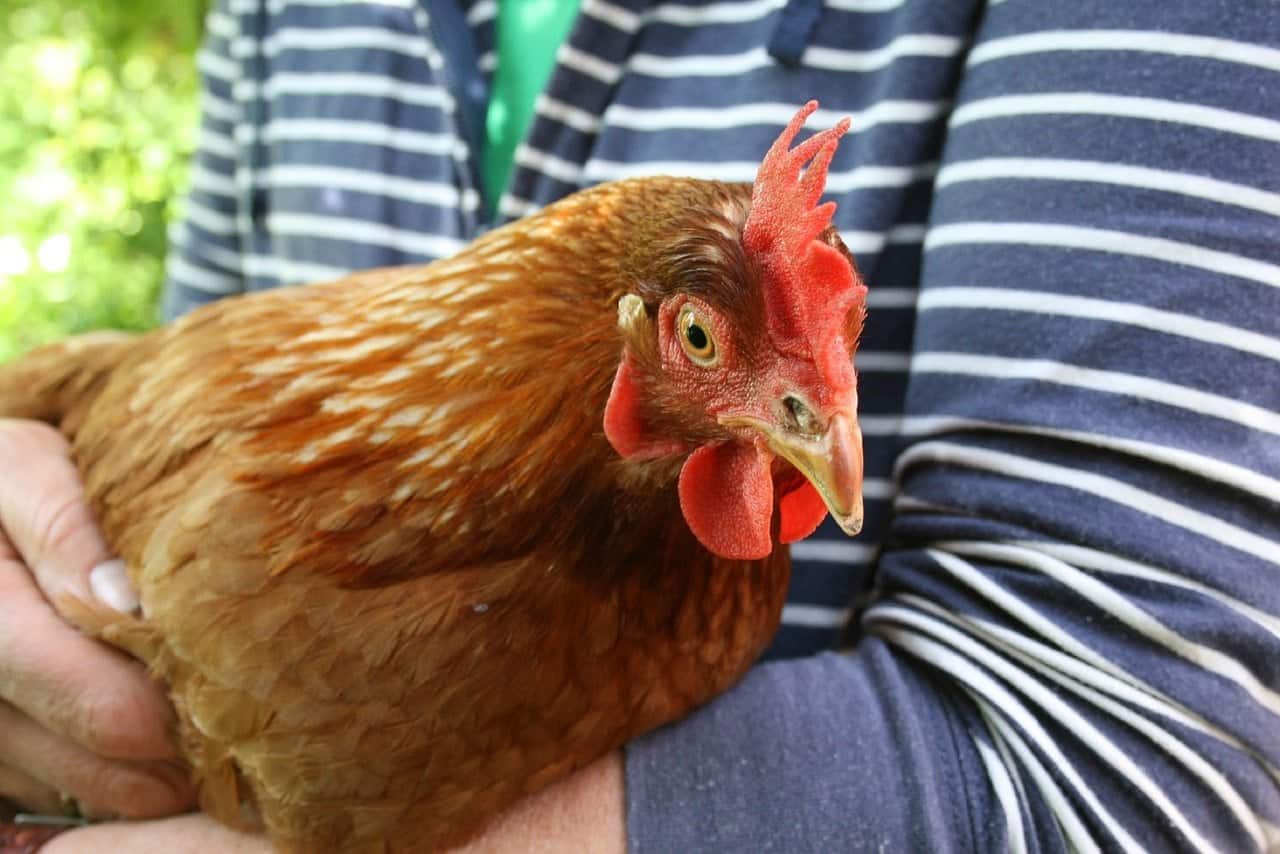There are many reasons to choose a particular breed of chicken. Some are known for ample egg production while others are reared because they offer a lot of great-tasting chicken meat. Friendly breeds are a good choice for homeowners that want pet chickens that also lay. It can, after all, be disheartening to have to sidestep an aggressive chicken whenever you enter the coop. Friendly chickens are a good addition to any flock because they help ensure the happiness of all flock members.

The 18 Friendliest Chicken Breeds
Below are 18 of the friendliest chicken breeds that will fit right in with your flock and won’t make egg collection a physical chore.
1. Silkie Chicken

Silkies are named for their silky feathers, and this particular breed is covered in feathers, literally from head to toe. They even have feathered legs. Unlike most chickens, the Silkie has five toes on each foot. They also have blue earlobes, black bones, and they don’t fly well because of how fluffy they are and how heavy their plumage is.
All Silkies are docile and friendly, calm, and they genuinely enjoy being cuddled. The hens are known to be quiet. The bantam variety is preferred only because it is smaller than the standard Silkie, but all Silkies represent the breed as a good pet chicken.
2. Plymouth Rock Chicken
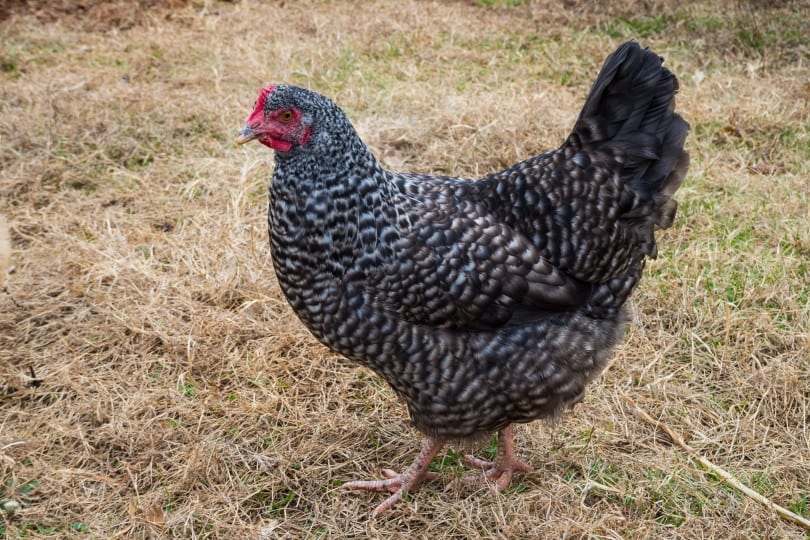
The Plymouth Rock is another great choice for a family pet but has the added advantage of being a prolific egg layer. A happy Plymouth Rock can produce as many as 280 eggs a year.
They come in a wide variety of colors, prefer to be free-range rather than kept indoors, and they can cope well with whatever the weather throws at them. They are also one of the friendliest breeds of chicken.
3. Speckled Sussex Chicken
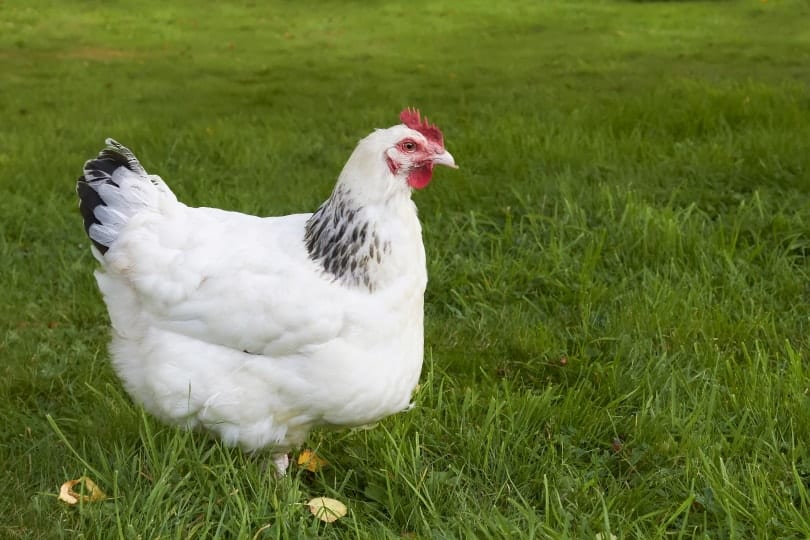
The Speckled Sussex is the favorite variant of this chicken breed, but you can get Sussexes in a host of colors including red, silver, and buff. They are very inquisitive, but they are sweet and can enjoy being picked up and loved.
Like the Plymouth Rock, they are also prolific egg layers, so they are ideal for a degree of self-sufficiency in your home. They can lay up to 250 eggs a year.
4. Buff Orpington Chicken
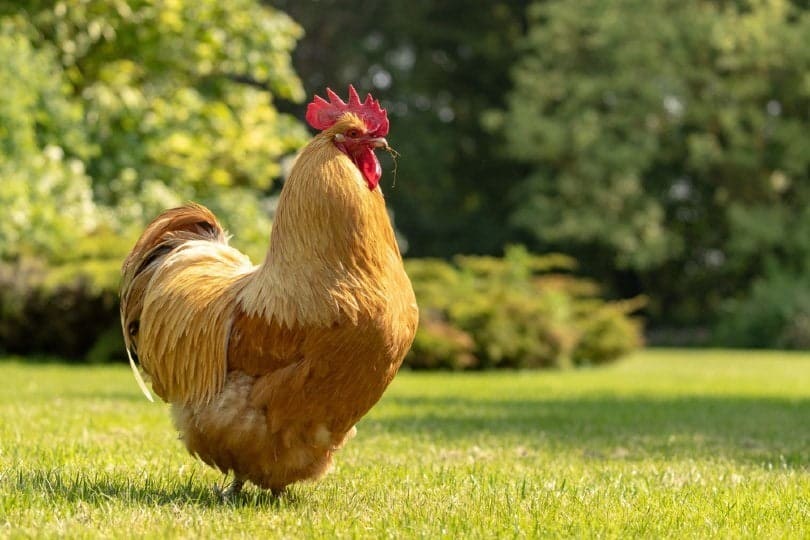
Orpingtons are a common breed of chicken, and the Buff Orpington, which is named because of its buff-colored feathers, is the most popular of this breed.
They yield around 200 eggs a year, are very friendly, and they are independent chickens, which means that they are suitable for potential owners that don’t want to have to micromanage their flock every day.
5. Rhode Island Red Chicken

Rhode Island Red chickens are usually thought of as being egg layers. They will produce up to 280 eggs a year, after all. The Rhode Island breed can be a little pushy, but they are also very loving. They are also inquisitive and are widely considered a fun breed to be around.
Although they will cope with being confined, Rhode Island Reds do enjoy checking out the yard and foraging for tasty treats.
6. Cochin Chicken
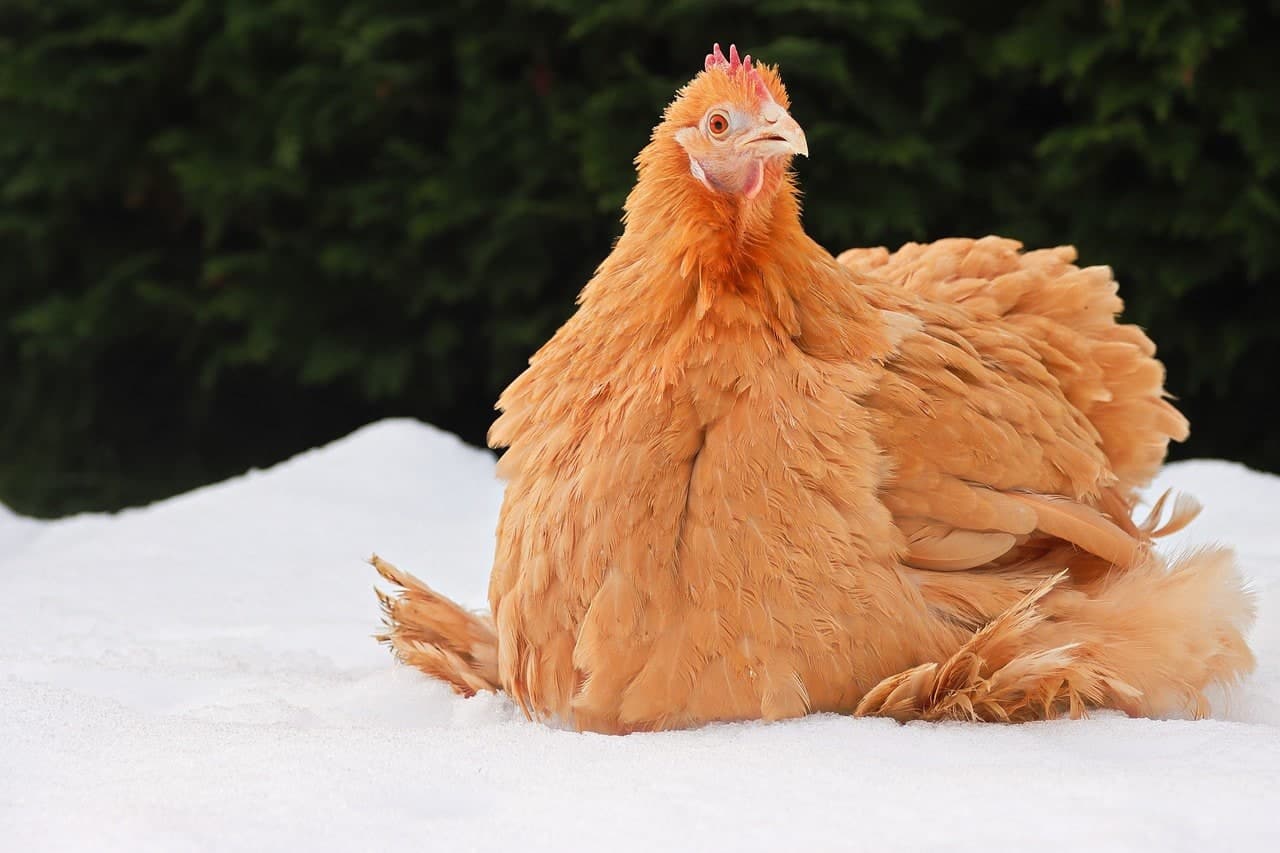
The Cochin is a giant chicken breed. Hens can weigh as much as 8 pounds, while cocks can weigh 10 pounds or more. Despite their giant size, they can be a little subdued around other birds.
They make great backyard pets because they happily remain in their dedicated area, they love to spend time on your lap, and they will even adopt and mother chicks and other small animals that have lost their mothers.
7. Wyandotte Chicken
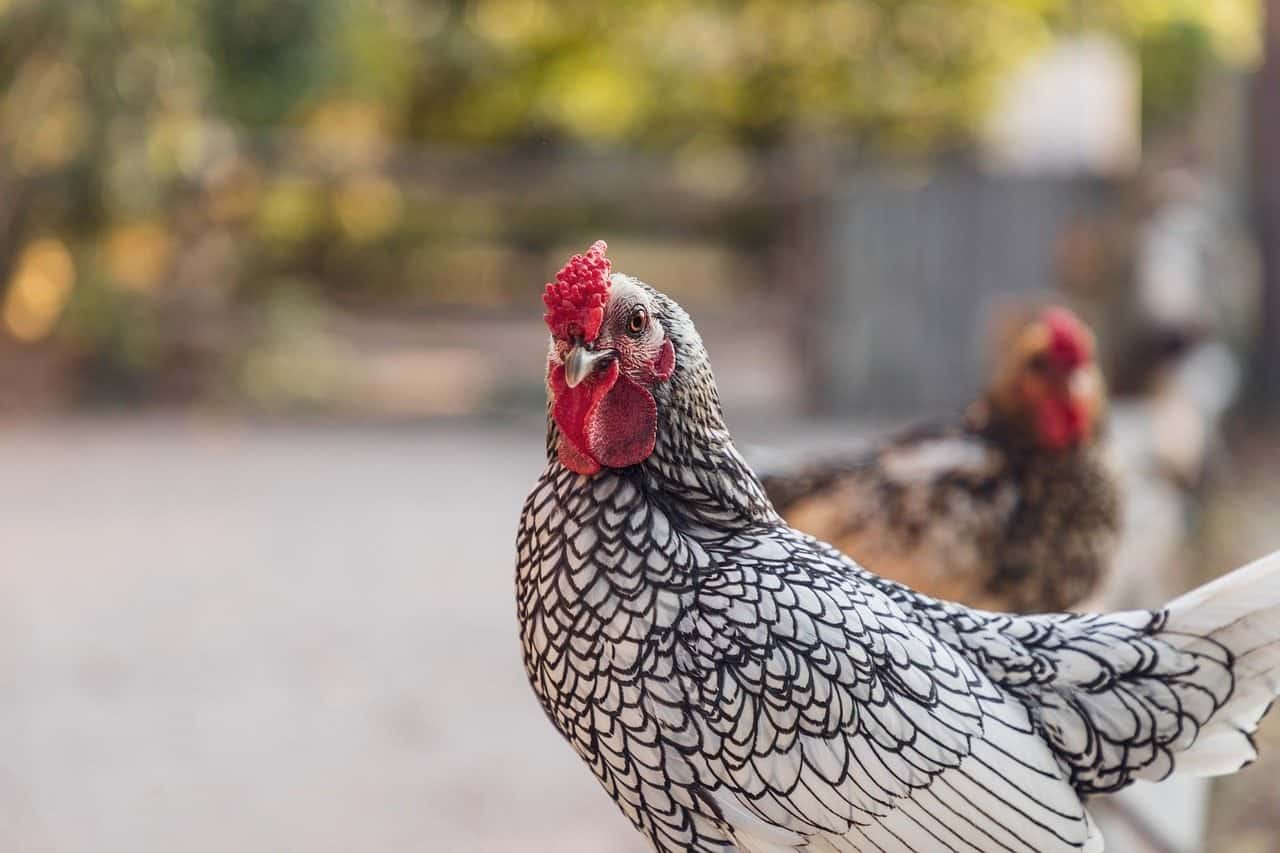
Another breed that does well when given clear boundaries is the Wyandotte. It is also a large breed that is considered a dual-purpose chicken, so it not only produces a good number of eggs every year, but its size also lends itself perfectly to being bred for meat.
Not only does this breed enjoy human company but it will cope with and even enjoy being handled by children.
8. Australorp Chicken
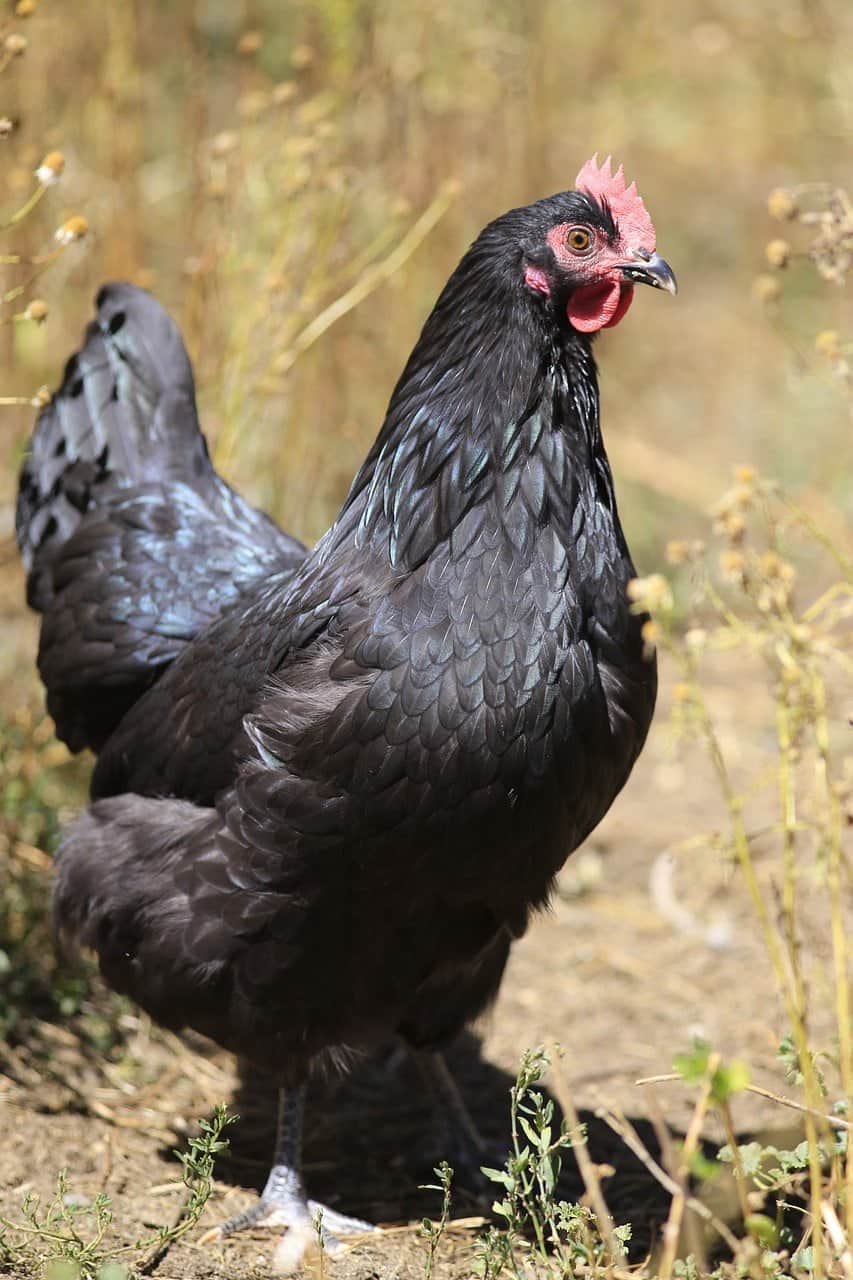
The Australorp is a combination of AUSTRALian and ORPington chicken breeds. They tend to be popular for their ability to lay as many as 250 eggs a year, but they are friendly and positively enjoy being kept in the confines of a backyard and inside their coop.
They are calm and peaceful and make less noise than a lot of other breeds, which is beneficial for home chicken owners.
9. Easter Egger Chicken
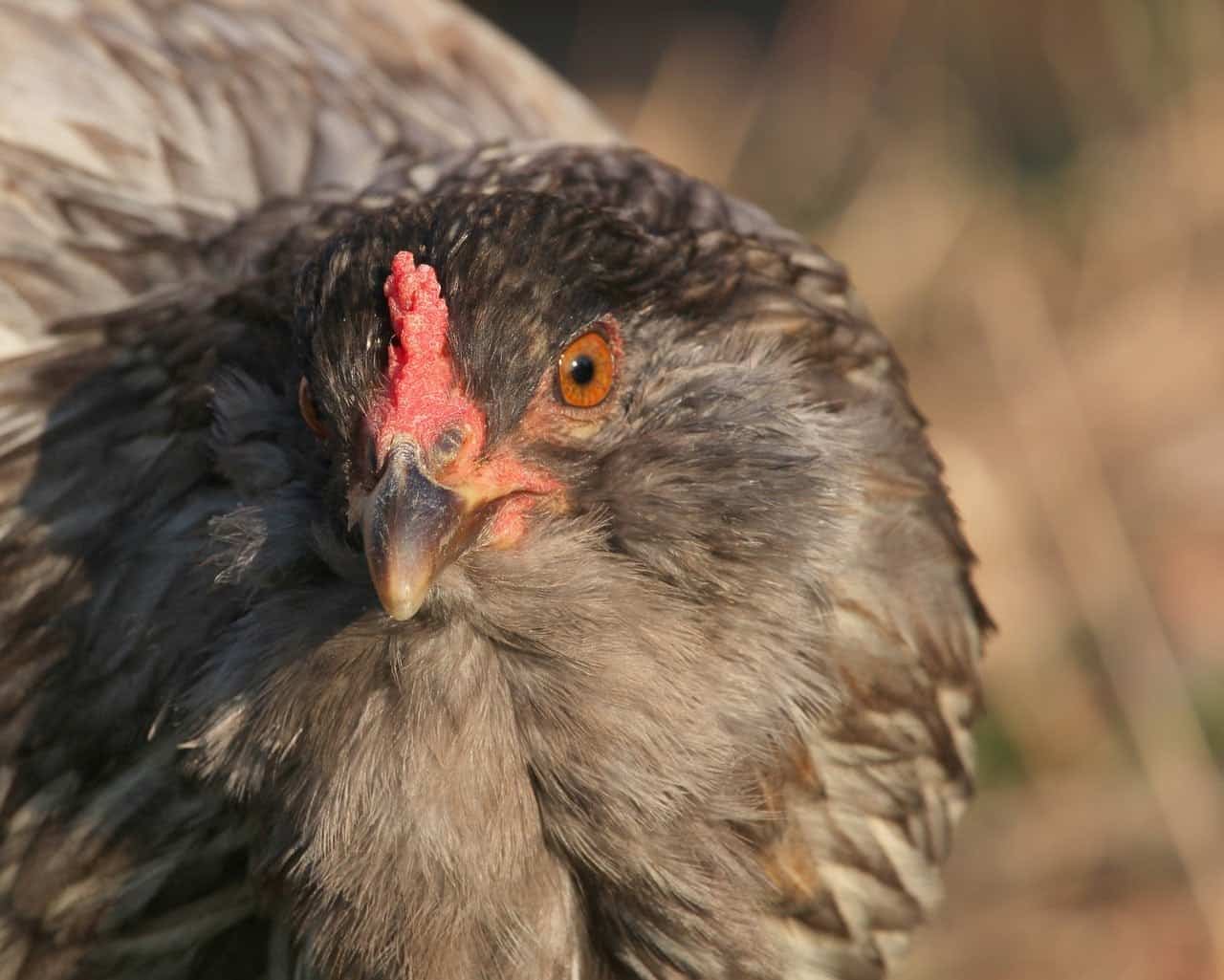
The Easter Egger is a hybrid breed. Breeders combined the Araucana and the Ameraucana breeds, primarily for the gamut of colors displayed in their eggs.
They are prolific layers, producing up to 250 eggs a year, and these eggs can include blue, green, pink, and a variety of hues and shades in between. The Easter Egger breed is friendly and easy-going. They enjoy being picked up and loved by their keepers.
10. Faverolle Chicken
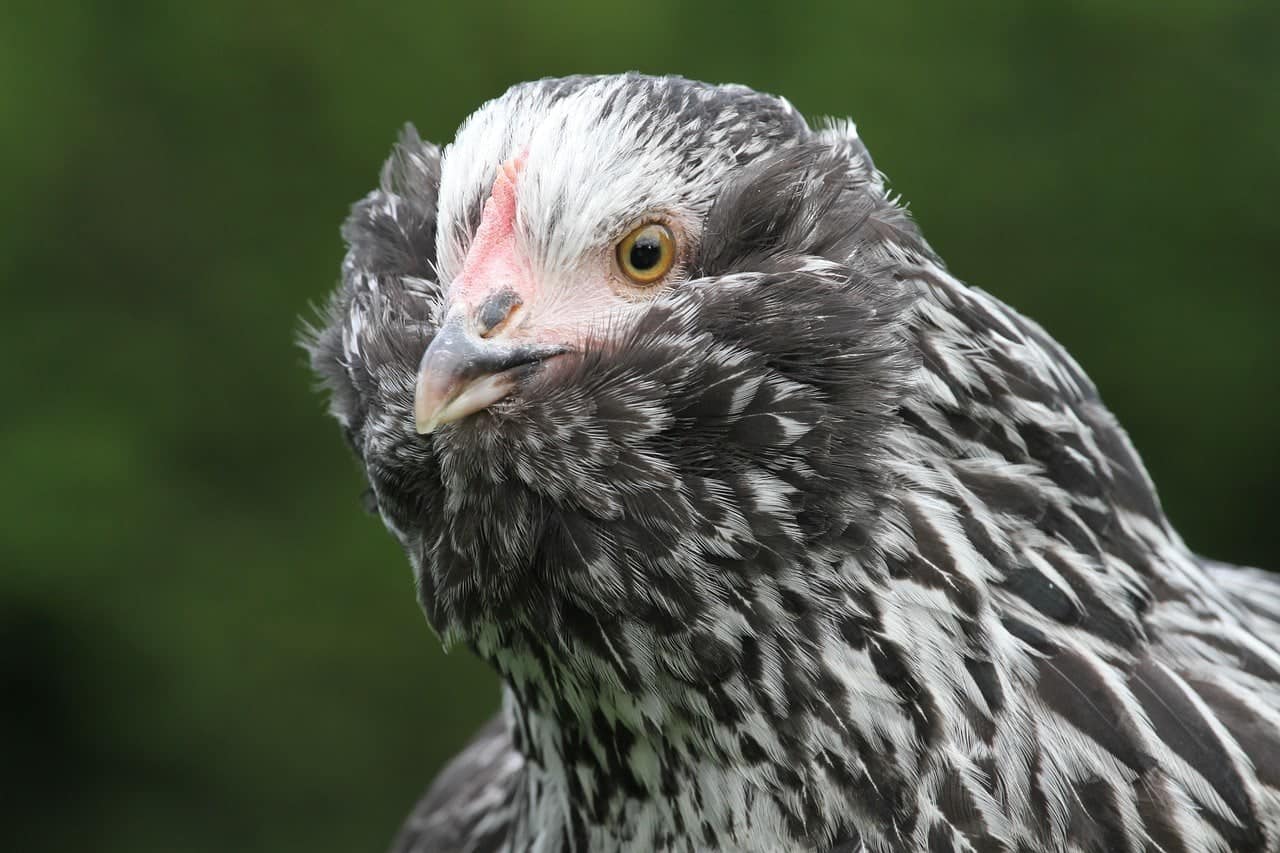
The Faverolle tends to be at the bottom of the pecking order in a flock. While they are a sweet, good-natured, and wonderfully friendly breed for keeping at home, they can be difficult to manage because they tend to get picked on by other birds.
Faverolles are exceptional as a pet for children, though, and they enjoy as much attention as can be given to them.
11. Jersey Giant Chicken

As the name suggests, the Jersey Giant is a huge breed of chicken. It is friendly with other varieties of chicken and other types of bird. In fact, this breed is liable to befriend the family cat and dog, if allowed, and it is a true gentle giant.
They are also tough and hardy animals that can cope with the cold quite well, but they do require plenty of space because of their size. The size of the Jersey Giant also means that they can be difficult to pick up and handle.
12. Brahma Chicken

Another breed that is suitable for children but is difficult to pick up and handle is the Brahma.
This giant breed will only produce around 150 eggs a year, but they are very friendly and can cope well with colder climates. They do require space and can be surprisingly heavy.
13. White Leghorn Chicken

The Leghorn is another breed that yields around 280 eggs a year. In fact, this is the most common breed in commercial egg production.
The White Leghorn breed is not necessarily friendly naturally, but it is intelligent and can be trained. The first thing you need to train the Leghorn to not do is fly away because this breed enjoys stretching its wings whenever it can. They require work, but they can make excellent pets once trained.
14. Polish Chicken
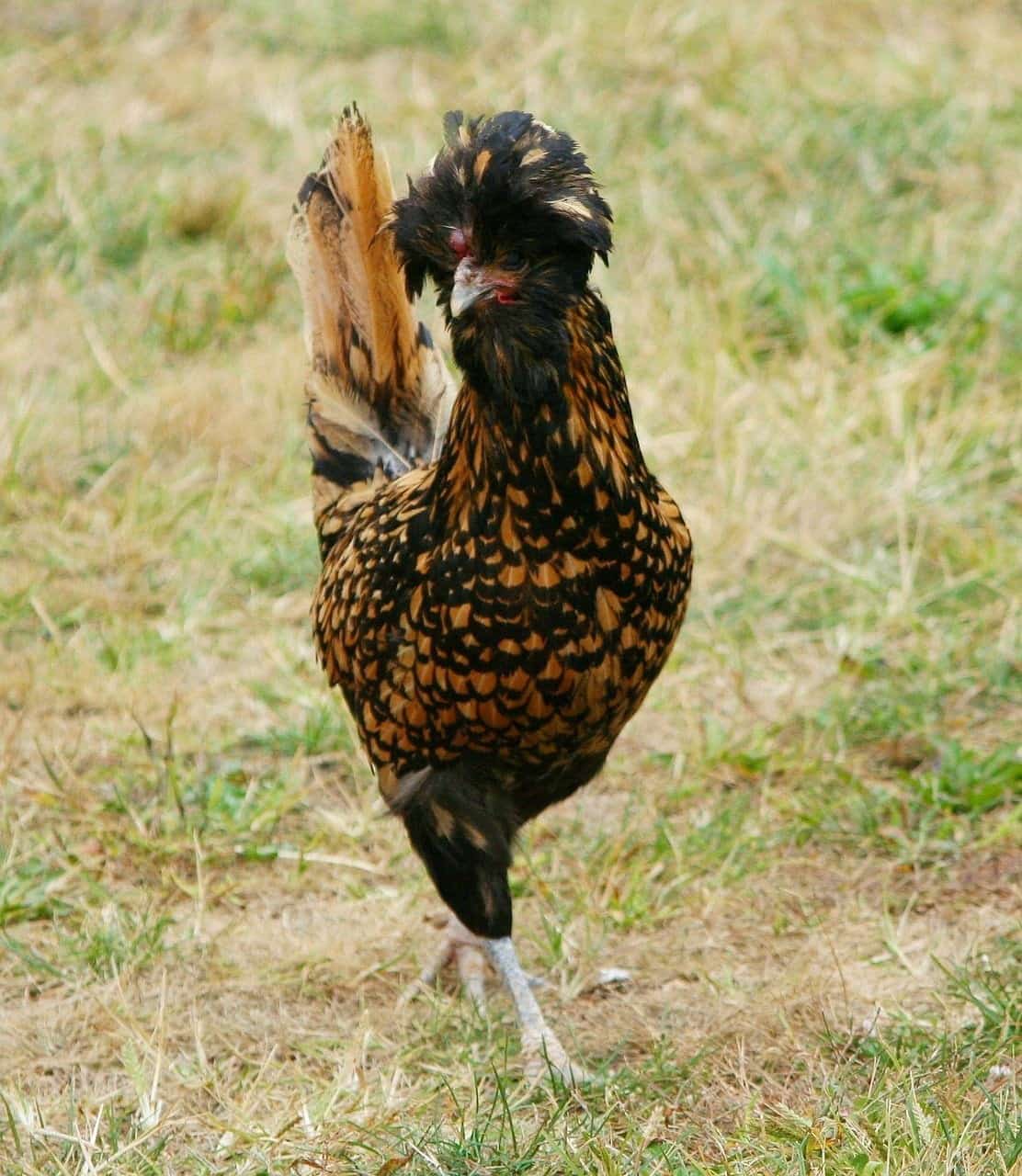
Polish chickens have gained a degree of popularity thanks to their unusual appearance. They have feathered crests that look almost like the bird is wearing a crash helmet.
They do well when kept in confinement and they are curious. This combination means that an indoor coop is usually recommended. As well as their unique hairstyle, the Polish likes to be handled and is a decent layer, producing around 200 eggs a year, on average.
15. Star Chicken
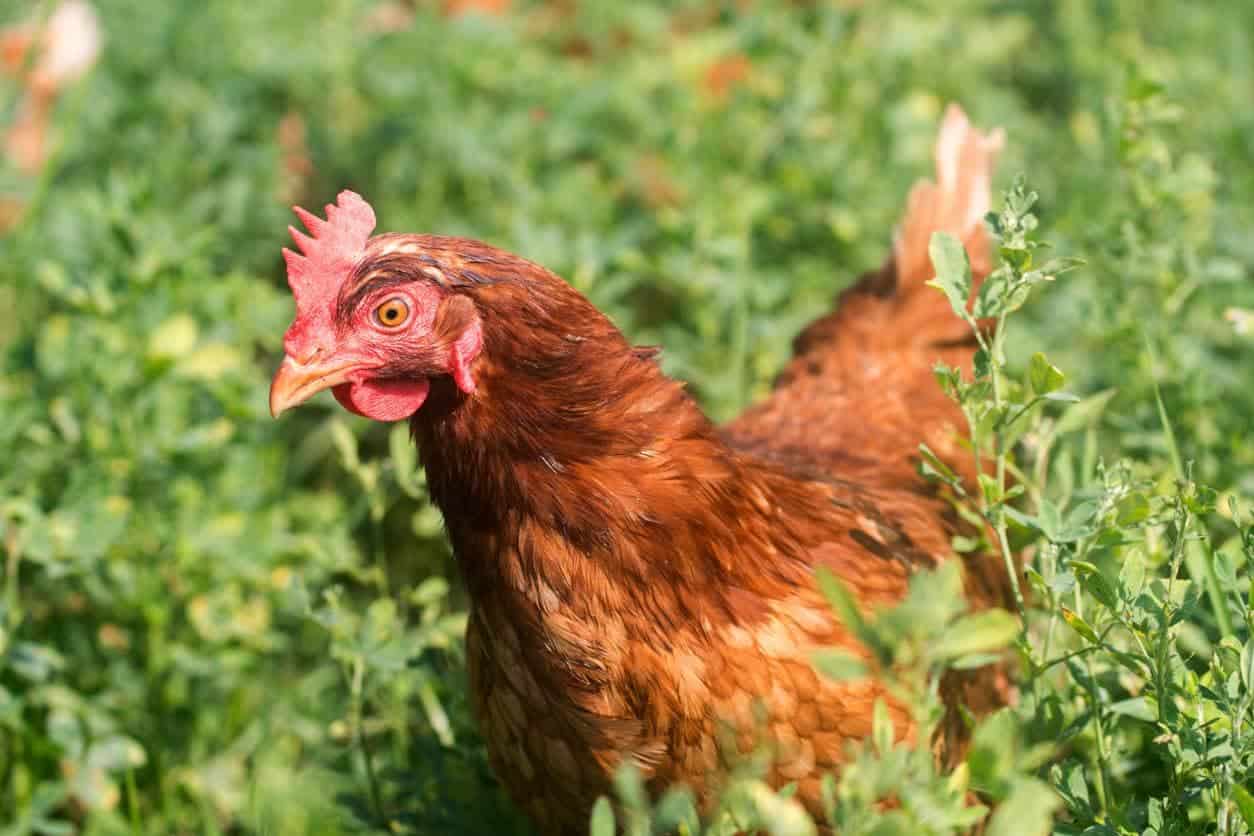
The Star is another hybrid breed, and both Red Stars and Black Stars are considered good pet chickens for keeping at home.
Star breeds can be sexed when hatching, which makes life much easier. They lay about 250 eggs a year, and are a calm breed that is good for beginners.
16. Barbu D’Uccles Chicken
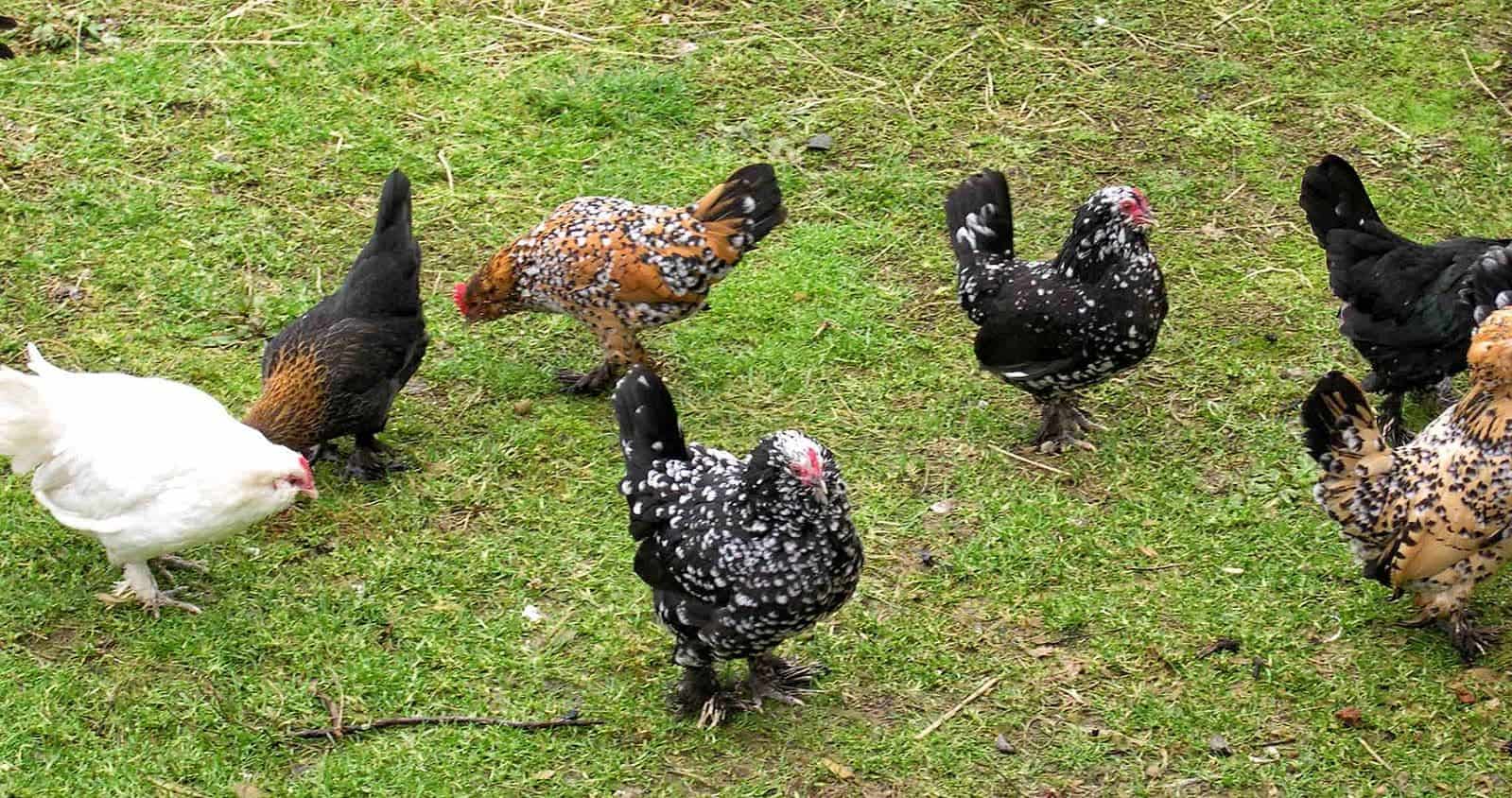
These Belgian birds are bantam chickens, which means they are very small. They are also sweet and very docile: a combination that makes them easy to care for and love.
With feathered beards, the Barbu D’Uccles will win over anybody during a first encounter. They like to perch on the shoulders of owners, and they love being handled.
17. Sultan Chicken
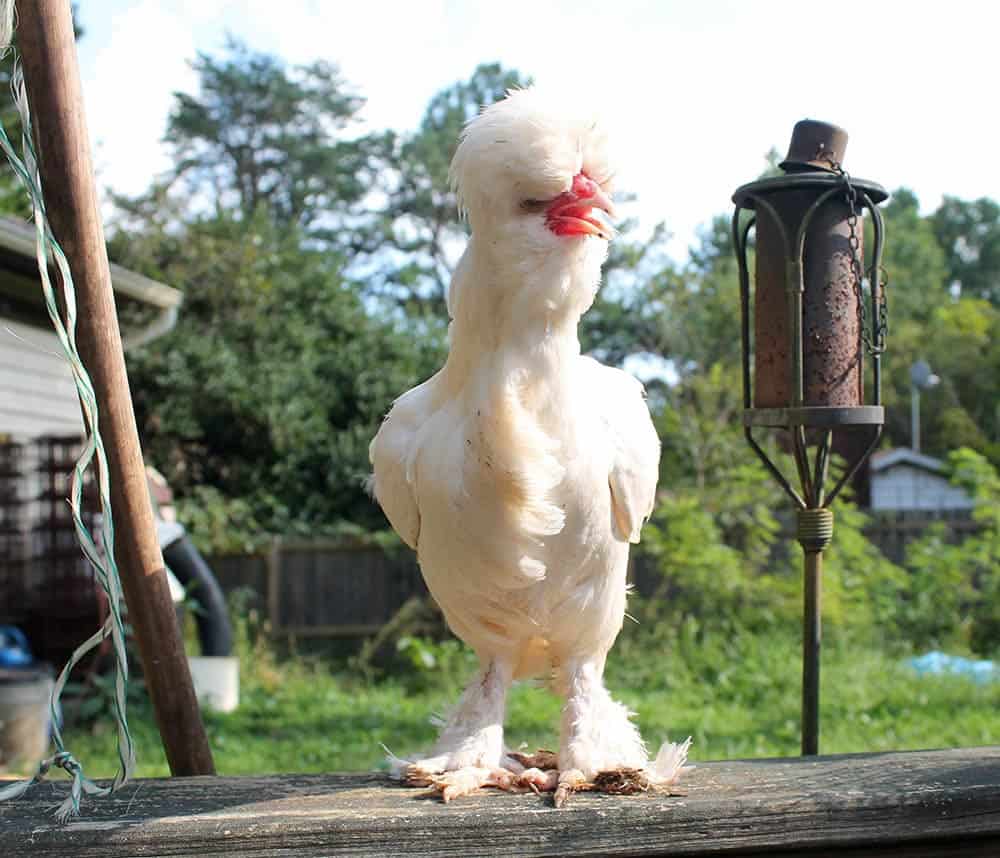
The Sultan breed is so-called because they were first bred as the court bird of the sultans of the Ottoman Empire.
They don’t lay many eggs, but Sultans do have leg feathering that makes them attractive and docile animals. They also enjoy being around humans and are happy when confined, so they make great yard pets.
18. Sebright Chicken

The Sebright breed was developed in the 19th century when Sir John Sebright, a member of the British Parliament, created what he believed to be the perfect chicken.
The breed is very rare, and Sebright took the exact formula for breeding them to his grave, but they are friendly, unique-looking birds that would make a great addition to any flock, when available.

The 6 Tips to Rear a Friendly Chicken
The breed you choose is important. Some breeds are naturally more inquisitive than others, which means that they will be more inclined to befriend you. Some naturally enjoy being picked up and cuddled, while others strongly dislike being touched, let alone held. However, whatever breed you choose, there are some steps that you can take to help improve the likelihood that the members of your flock will enjoy a little bonding time with their owner.
1. Be Calm
Speak with a soothing voice, be calm, and try to avoid making sudden movements or loud noises that might alarm the chickens. You need to ensure that others follow the same rules, too. You might be forgiven for the occasional loud noise, but not if you scare your chickens regularly.

2. Handle Them Regularly
What you do want to do regularly is handle your chickens. This will get them used to being held, hugged, and handled. This is especially beneficial if you have your chickens from a young age. Spend time around them, even when you’re not handling them or feeding them, and hold them every day.
3. Use Treats
Chickens are like most animals and people. They enjoy treats. In this case, a treat is a tasty morsel that would not normally be part of their food. Treats can include mealworms, chopped lettuce, or small pieces of scrambled egg. Start by petting the chick’s chest because they’re not too keen on having their heads petted.

4. Allow Them to Free Range
Chickens that are shut away from people will become more reclusive and antisocial than those that live around humans and other animals. Unless they’re a serious flight risk, consider letting your flock free-range about the yard. Talk to them, spend time with them, and get them used to your company.
5. Warn Them
When approaching the chicken coop or their pecking area, let them know you’re coming. Start to talk when you’re a short distance away and keep talking as you approach. Chicks don’t always pay attention to what is going on around them, and you could catch them unaware and scare them.
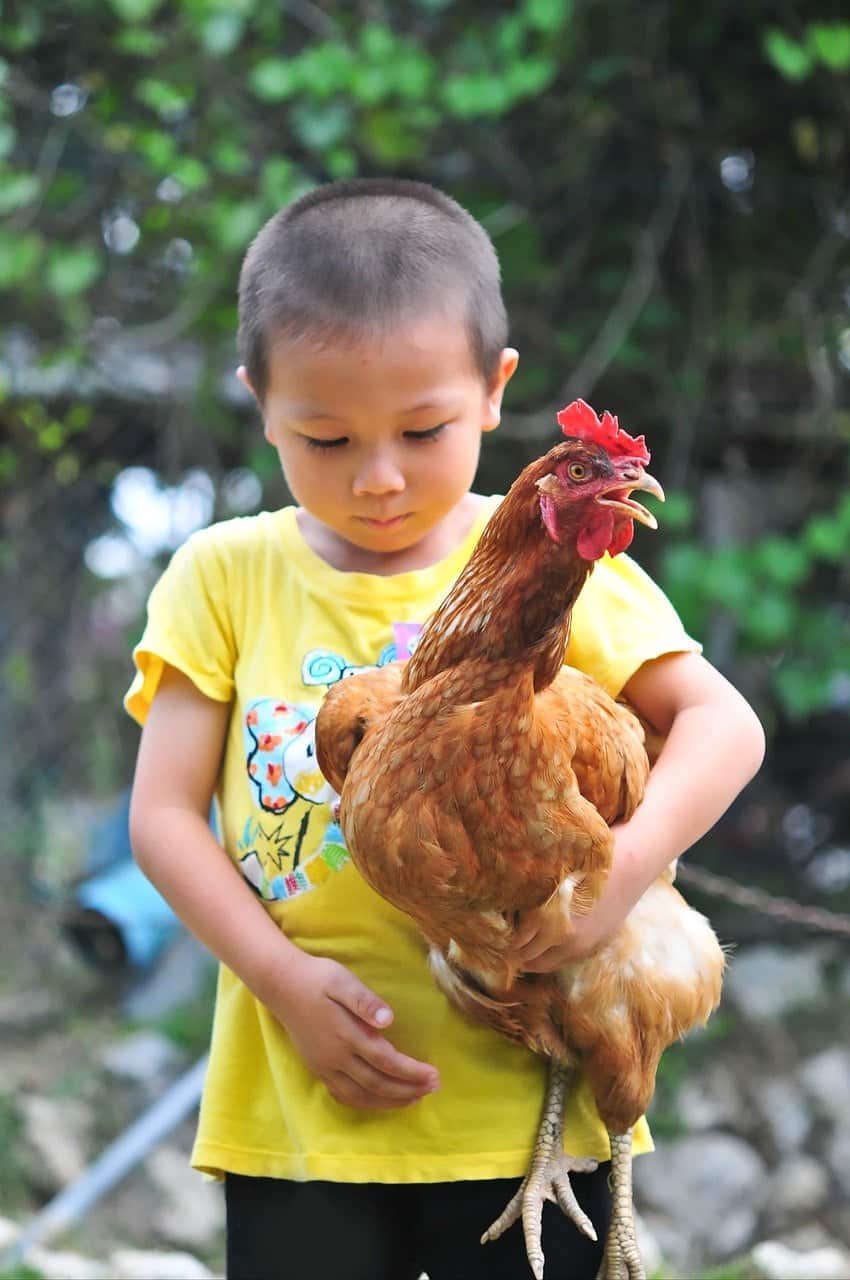
6. Don’t Overdo It
When getting your flock used to spending time with you, remember that they will expect and want that level of interaction with you in the future. Unless you want to spend an hour every day holding and petting your chickens, you should avoid spending this much time with them in the first place.

Final Thoughts
Friendly chicken breeds are ideal for home chicken breeders. They are easy to handle, although the larger breeds can be a challenge if you need to physically pick them up. Many breeds love to be picked up and cuddled, and most of the 18 friendly breeds listed above will get along with other chickens or birds. Consider the primary reason for breeding chickens and ensure that you get a breed that matches your requirements, whether you want a flock solely for pets, or you want prolific egg layers that also like to be picked up and handled.
Interested in more posts about our feathered friends? Check out:
- 10 Black and White Chicken Breeds (With Pictures)
- 100+ Chicken Names: Ideas for Cooky & Friendly Chickens
- 15 Largest Chicken Breeds
Featured Image Credit: Pixabay
